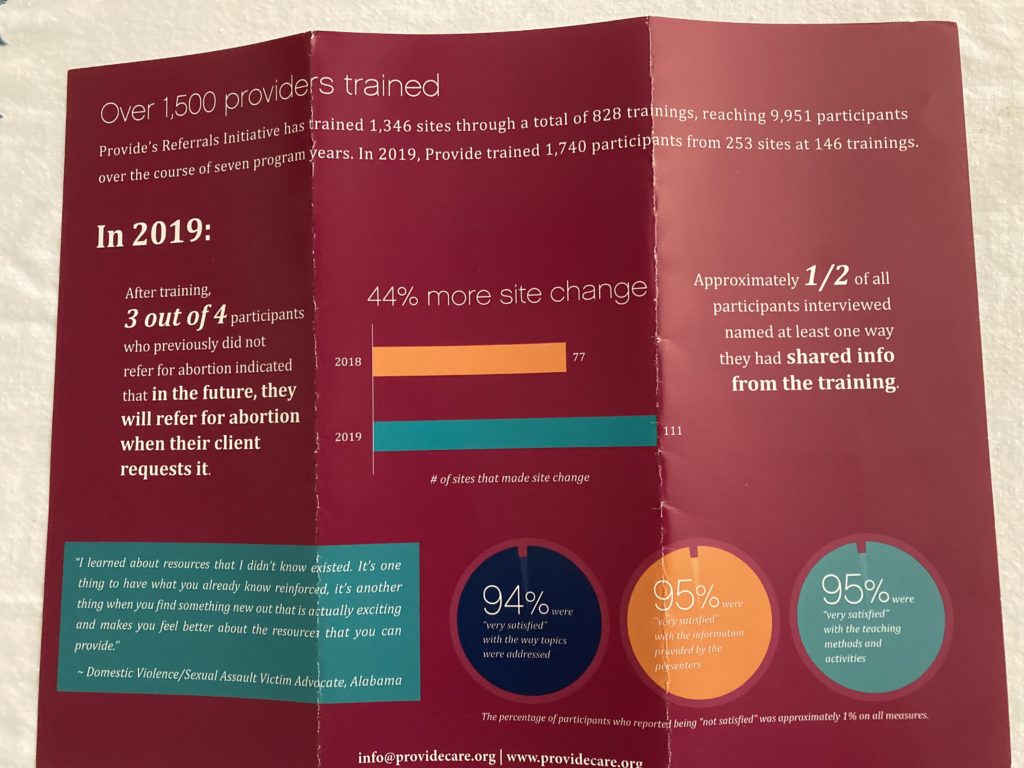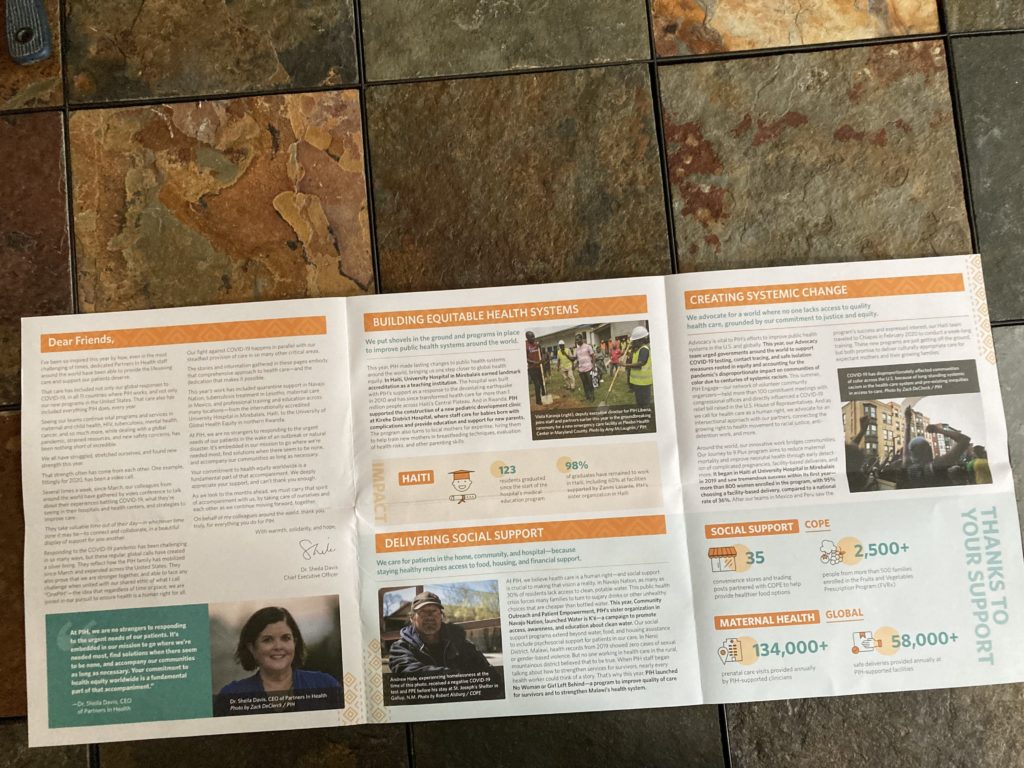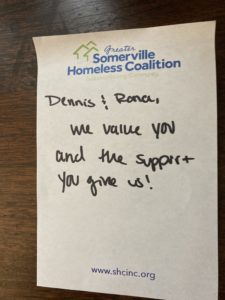With a good annual report, you can make donors feel thanked and valued. And when you do, you will create loyal donors and inspire renewed donations.
Why Annual Reports Matter
When a donor sends a gift to your nonprofit, they want to know these things:
- You received the money.
- You appreciated the donation.
- You used it well.
- It made a difference.
Not unreasonable of them, right? When you’re a donor, you probably want to hear about the same things. But the information that donors want is not going to get to them by accident. Your nonprofit has to make a deliberate effort.
They have questions. How do you let them know the answers ?
A great thank-you letter or email is the first step to letting donors know you are grateful. Then, communications throughout the year can reinforce your message that they are heroes making the difference.
Your annual report can pull it all together. By showing how you spent money and how it helped real people to live better, you can make the case that giving to your nonprofit was a good decision…and help the donor to make that decision again.
Three Ways to Create Annual Reports
Brochure
Provide sent my wife and me a colorful tri-fold brochure. One side of the brochure focuses entirely on impact. “Over 1,500 providers trained,” it says, and then it:
- Tells us what happened after the training: more healthcare and social service providers referring their patients for abortion, at more sites, sharing the information they’d learned more broadly.
- Shows how immensely satisfied participants were with the training.
- Quotes a participant bout what they learned and how it made them feel.
In three seconds, I could tell what Provide was saying. In thirty seconds, I could see why it was impressive.
The flip side of the brochure was somewhat crowded with the classic pie charts about finances (too large) and verbiage about Who We Are, Who We Work With, and Who We Train (too small and in white on black, which is hard for middle- and old-aged eyes to read). But these sentences in the message literally stood out:
We see you.
We hear you.
We appreciate you.
Could your nonprofit use a brochure like this to send those messages to your donors?
Newsletter style
 Partners In Health sent us an an annual report that looks a lot like the newsletters they send us regularly.
Partners In Health sent us an an annual report that looks a lot like the newsletters they send us regularly.
The downside of that approach is that at first, it didn’t seem like anything special. I nearly put it aside to read later–and you know what happens to most things that are put aside like that: they end up in the recycling bin, unread!
The strength of the approach is that it’s “on brand,” so if I am used to getting good information from Partners In Health, I will expect a similar good experience from this mailing.
The report uses photos to show the human impact of its programs and graphics to present the overall numbers. Both of those work well.
The text included in the report is less effective. Again, it’s too small, and it’s all “we” (meaning the organization). The only place you appears is on the donation form included with the report–and sends the message that they are doing all the good, and my only role is as a piggy bank, not a partner in health.
Could your nonprofit adapt your newsletter format for an annual report? And if you do, could you use fewer words in larger font and make the donors feel like a partner?
Flyer and personal note
The Greater Somerville Homeless Coalition grabbed my attention as soon as I opened the envelope because, on notepaper-sized stationery, they hand-wrote the message:
Dennis & Rona,
We value you
and the support you give us!
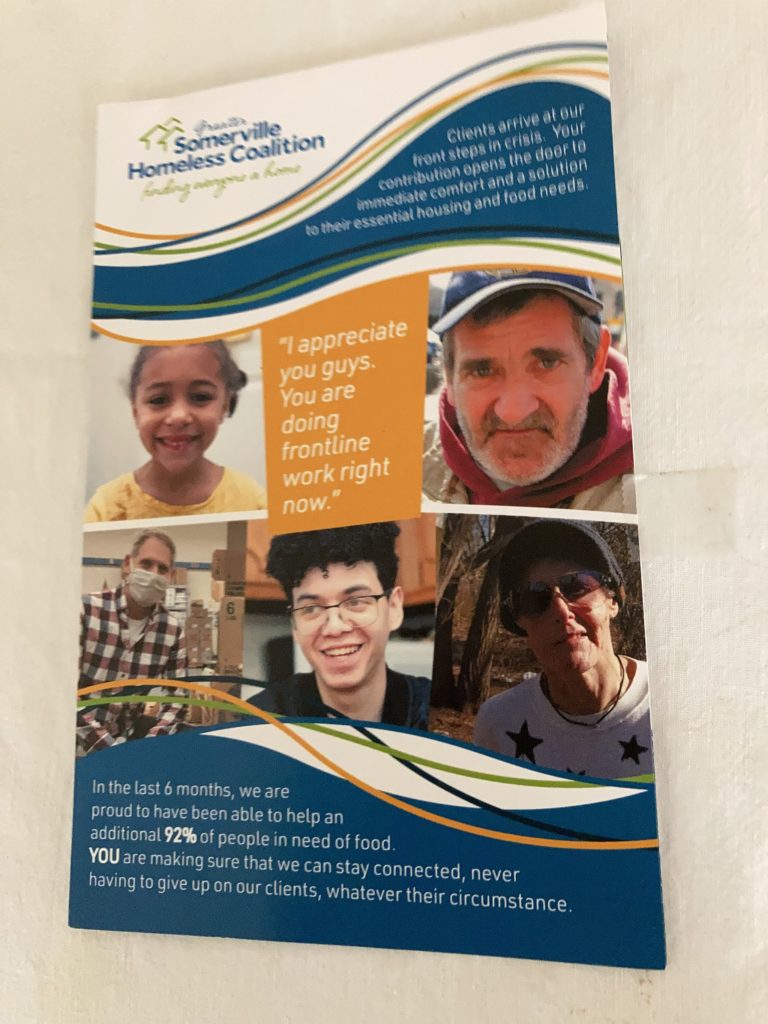 That emphasis on the donor continues onto the Coalition’s brochure, which starts out, “Clients arrive at our front steps in crisis. Your contribution opens the door…”
That emphasis on the donor continues onto the Coalition’s brochure, which starts out, “Clients arrive at our front steps in crisis. Your contribution opens the door…”
In fact, almost every time the brochure says “you,” it’s possible to read it as including you, the donor.
I appreciate you guys. You are doing frontline work right now.
You make the difference. Thank you for being part of the solution.
It is important for people like me, who can’t afford the rent, to have the kind of genuine support you give me.
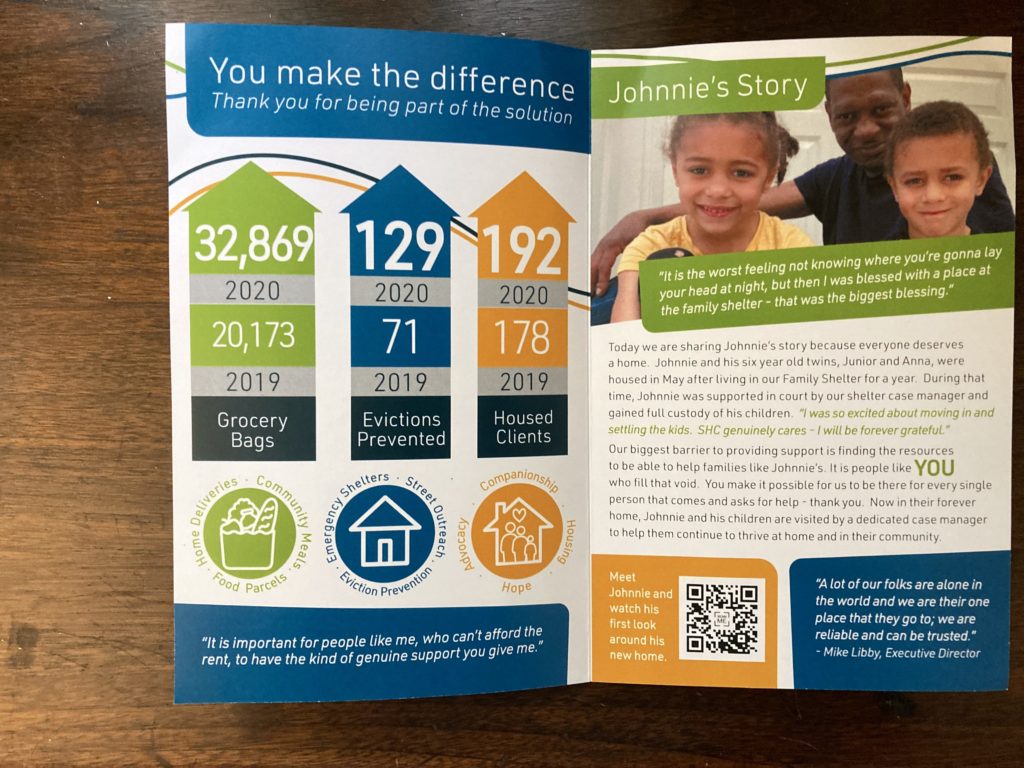 Like Partners in Health, the Coalition presents its numbers in eye-catching graphics. But the Coalition’s annual report goes one step beyond what either of the other organizations did, because it tells us the story of one person and his children.
Like Partners in Health, the Coalition presents its numbers in eye-catching graphics. But the Coalition’s annual report goes one step beyond what either of the other organizations did, because it tells us the story of one person and his children.
When donors ask, “What good did I do by giving to them?”, I don’t think they’re going to say “I sent 32,869 bags of groceries,” or even, “I housed 192 homeless clients.” I think they’re going to say, “I helped Johnnie and his children get out of the homeless shelter.”
Could your nonprofit touch the heart by including stories and personal notes in your annual report?
